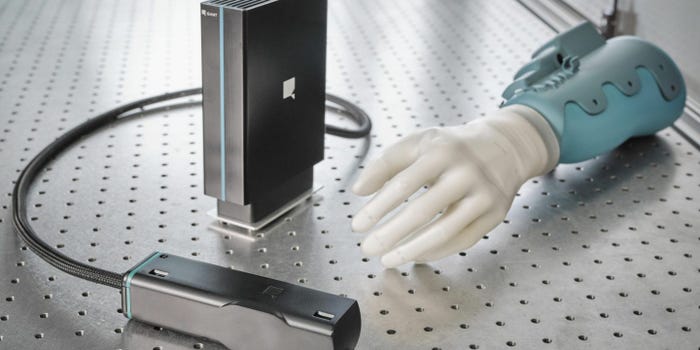Zero-trust approaches require a shift in mindset to ensure IoT devices have rigorous security policies applied — and the work is never done, say IT pros.
December 7, 2020

As data grows more integral to the enterprise, policies to protect it have to get more rigorous, especially those for IoT devices, which need a trust-but-verify approach. Zero-trust strategies are particularly important in a world of proliferating Internet of Things (IoT) devices. Many of these devices can access the network but also be easily compromised given lax or outdated security patches and the like on these devices. But companies often have to wrestle with a shift in mindset to adopt a zero-trust philosophy, as it often breaks from existing practices.
A zero-trust security strategy centers on the belief that companies shouldn’t just trust users – whether users are humans, devices or packets – inside or outside their perimeters and give them access to IT systems and data until they’ve been inspected and authenticated.
Under the zero-trust framework, only authenticated and authorized users and devices can access applications and data.
“Zero trust is really a mindset, or maybe an organizational culture, where anything you don’t know, you can’t trust and you have to verify,” said Gonda Lamberink, senior business development manager, UL.
[Take part in IoT Security Summit this December.]
That means organizations have to verify the identity of anyone or anything who accesses networks as part of an access control management strategy, she said.
Southern Methodist University (SMU) has embraced this zero-trust philosophy, said George Finney, the university’s chief security officer.
“It’s that mindset of habits,” Finney said. “You have to get into the mode of thinking skeptically about the technology you use and the ways you interact with it.”
Companies have to ensure that active devices – and users –meet certain requirements, Lamberink said.
Zero trust starts with having visibility into which IoT devices are running on a network and what these devices’ entail so an organization can apply the appropriate controls to isolate them, said Chase Cunningham, vice president and principal analyst, Forrester Inc.
“I can’t apply controls to a battlefield where I don’t even know what’s on my battlefield,” he said. “So I start by looking at the IoT space and saying, ‘This is what’s going on. This is what’s active, and this is what I need to start isolating because there may not be a business justification for [certain devices].”
Enterprises can use the strategic concept of zero trust to remove overt areas of compromise on IoT devices and stop them from being threats, he said.
“What we’ve seen go wrong with IoT devices is that a lot of these vulnerabilities relate to weak access control or access management,” Lamberink said. “So we focus on identity and access management, including strong authentication mechanisms and we build from there.”
Zero trust involves developing a cybersecurity policy at the individual user and device level, said Chris Williams, cybersolution architect at Capgemini.
“That means companies are going to add security controls at a couple of different layers,” he said. “First is at the network layer, and that basically involves making your network smart about what is plugged into it.”
Network access control technology can scan devices that are plugged into the network, profile those devices based on various properties to try to figure out what they are and give the devices appropriate access based on the organization’s security posture, Williams said.
“Then once I’ve allowed that device to connect to my network, I’m going to query and authenticate based on the user,” he said.
And IoT is one of those opportunities for companies to rethink devices given the challenges surrounding IoT Internet of Things is devices, Finney said.
“So if you’ve got a [connected] printer or a thermostat or whatever other device you have, often those devices aren’t getting patched regularly, like your computers are,” he said. “They don’t have two-factor authentication enabled. So you’ve got to protect them as though you didn’t trust them, like they were the parts of your network that made you nervous the most.”
For SMU that means first asking if a particular device needed to be on the network at all, Finney said. And if the answer is yes, does it need to have internet access?
“We asked, ‘Can we block it from talking to the internet?'” he said. “Then there was the conversation about if you block it from the internet, you can’t get patches. But if you know you’re never going to patch it, then maybe you should lock it down.”
SMU’s zero-trust culture involves micro-segmentation, which entails separating networks into groups to make them smaller and smaller. So instead of having 254 computers on a network, maybe an organization would only have five or 10, he said.
“We like to group them together into really small compact groups,” Finney said “So if one of those devices is compromised, we have to assume that all of them will be. But at least we’re containing that outbreak into a much smaller segment. And those segments have specific allowed rules of talking to other things on the network. So we can limit the impact of a potential issue on an IoT network.”
SMU has also developed a granular architecture in terms of securing all the different areas. The university, for example, has separate networks for the Internet of Things, so devices such as cameras, printers and the heating, ventilation and air conditioning systems (or HVAC) are isolated, according to Finney.
Finney stressed, however, that zero trust is more of a philosophy that an architecture. Organizations always have to be reassessing and doing ongoing monitoring and analysis.
“You’re never done; it’s definitely an ongoing approach,” he said.
About the Author(s)
You May Also Like




.png?width=700&auto=webp&quality=80&disable=upscale)
.png?width=300&auto=webp&quality=80&disable=upscale)


.png?width=300&auto=webp&quality=80&disable=upscale)